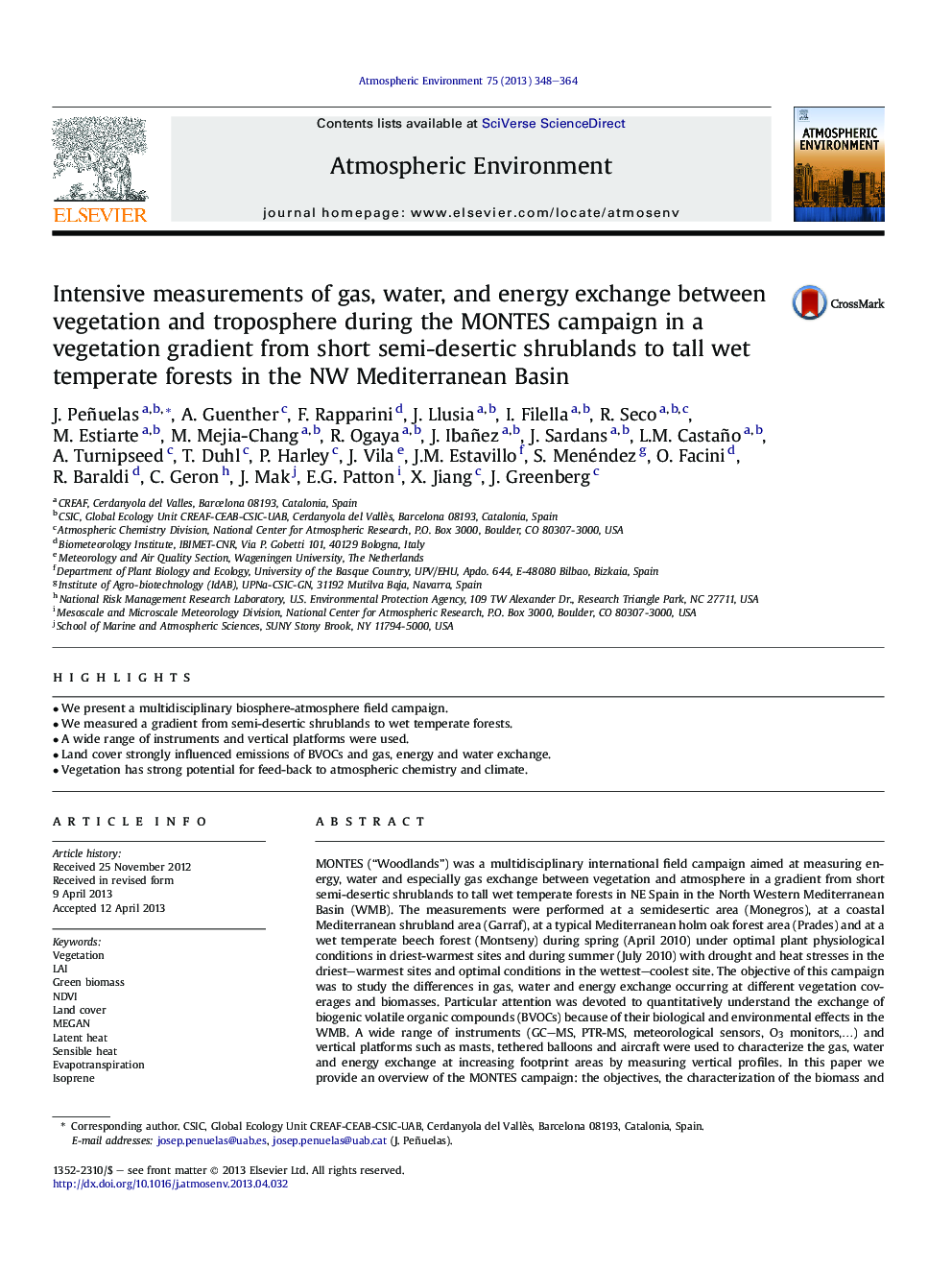| Article ID | Journal | Published Year | Pages | File Type |
|---|---|---|---|---|
| 6341908 | Atmospheric Environment | 2013 | 17 Pages |
Abstract
MONTES (“Woodlands”) was a multidisciplinary international field campaign aimed at measuring energy, water and especially gas exchange between vegetation and atmosphere in a gradient from short semi-desertic shrublands to tall wet temperate forests in NE Spain in the North Western Mediterranean Basin (WMB). The measurements were performed at a semidesertic area (Monegros), at a coastal Mediterranean shrubland area (Garraf), at a typical Mediterranean holm oak forest area (Prades) and at a wet temperate beech forest (Montseny) during spring (April 2010) under optimal plant physiological conditions in driest-warmest sites and during summer (July 2010) with drought and heat stresses in the driest-warmest sites and optimal conditions in the wettest-coolest site. The objective of this campaign was to study the differences in gas, water and energy exchange occurring at different vegetation coverages and biomasses. Particular attention was devoted to quantitatively understand the exchange of biogenic volatile organic compounds (BVOCs) because of their biological and environmental effects in the WMB. A wide range of instruments (GC-MS, PTR-MS, meteorological sensors, O3 monitors,â¦) and vertical platforms such as masts, tethered balloons and aircraft were used to characterize the gas, water and energy exchange at increasing footprint areas by measuring vertical profiles. In this paper we provide an overview of the MONTES campaign: the objectives, the characterization of the biomass and gas, water and energy exchange in the 4 sites-areas using satellite data, the estimation of isoprene and monoterpene emissions using MEGAN model, the measurements performed and the first results. The isoprene and monoterpene emission rates estimated with MEGAN and emission factors measured at the foliar level for the dominant species ranged from about 0 to 0.2 mg mâ2 hâ1 in April. The warmer temperature in July resulted in higher model estimates from about 0 to ca. 1.6 mg mâ2 hâ1 for isoprene and ca. 4.5 mg mâ2 hâ1 for monoterpenes, depending on the site vegetation and footprint area considered. There were clear daily and seasonal patterns with higher emission rates and mixing ratios at midday and summer relative to early morning and early spring. There was a significant trend in CO2 fixation (from 1 to 10 mg C mâ2 dâ1), transpiration (from 1-5 kg C mâ2 dâ1), and sensible and latent heat from the warmest-driest to the coolest-wettest site. The results showed the strong land-cover-specific influence on emissions of BVOCs, gas, energy and water exchange, and therefore demonstrate the potential for feed-back to atmospheric chemistry and climate.
Keywords
Related Topics
Physical Sciences and Engineering
Earth and Planetary Sciences
Atmospheric Science
Authors
J. Peñuelas, A. Guenther, F. Rapparini, J. Llusia, I. Filella, R. Seco, M. Estiarte, M. Mejia-Chang, R. Ogaya, J. Ibañez, J. Sardans, L.M. Castaño, A. Turnipseed, T. Duhl, P. Harley, J. Vila, J.M. Estavillo, S. Menéndez, J. Greenberg,
